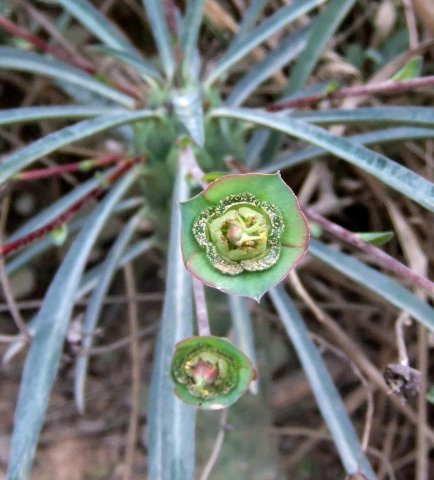Euphorbia clava leaves and cyathia

The stem of Euphorbia clava is club-shaped especially when young, become more cylindrical as it elongates. A long, narrow leaf grows from the tip of each young stem tubercle, deciduous and sometimes short-lived, but persisting long when moisture and temperature are favourable.
The oblong to linear leaf has a rounded tip and a base that tapers in a way that makes the existence of a petiole debatable. The upturned leaf margins are entire, not much wider than the conspicuous whitish midrib. Leaf colour is bright green to blue-green, sometimes blotchy.
The greenish cyathia or false flowers of E. clava are produced upon long, dark red peduncles. The three pale green or purple bracts around the false flower may form a neat cup as in the photo or spread separately. The blooming may happen from late winter to mid-autumn; this photo was taken in August near Addo.
The fruit is a purplish, three-segmented capsule of 8 mm in diameter. It dehisces when dry, launching its seed abruptly in mechanical dispersal (Gledhill, 1981; Bond and Goldblatt, 1984; iSpot).

